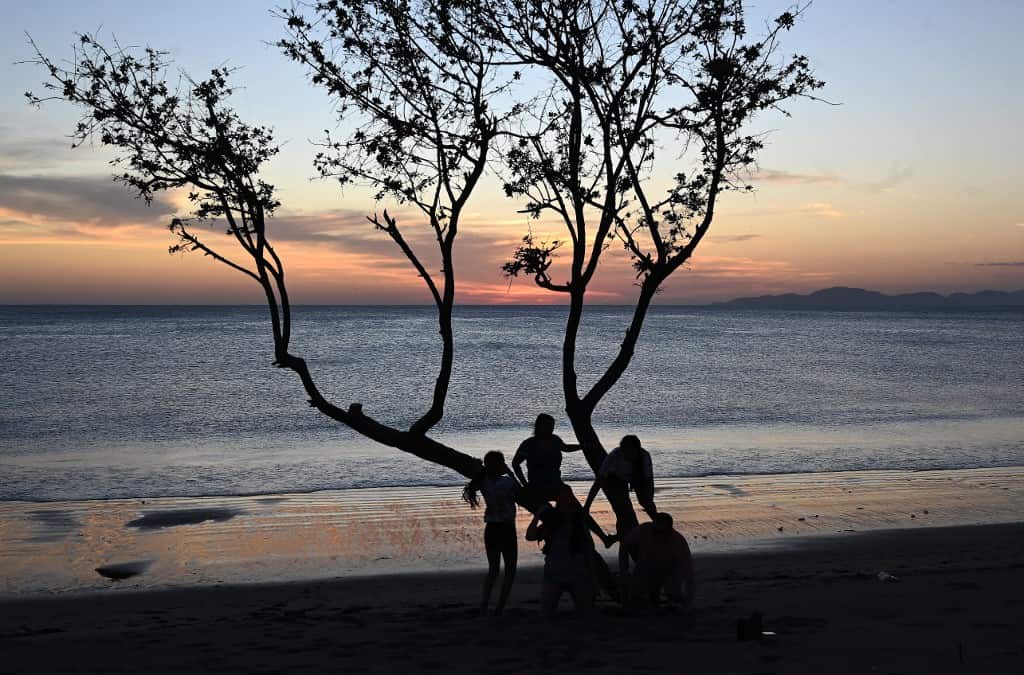On the sandy shore stands out the destruction of houses as if by an earthquake. They have been mercilessly swept away by the Pacific Ocean in southern Honduras, as the sea level rises, according to locals because of global warming.
Waves like a slow-moving tsunami are sweeping over land-based properties in Cedeño and half a dozen fishing villages in the Gulf of Fonseca, about 100 km south of Tegucigalpa, which Honduras shares with El Salvador and Nicaragua.
“The sea is advancing,” laments Telma Yadira Flores, a 40-year-old housewife who lost her concrete home last year and now lives in a battered plank house whose kitchen has beach sand as its floor.
Telma, who lives with her son and daughter-in-law, fears that the situation could happen again. “If the sea gets in again, we will have to leave and see where we go.
With some 7,000 inhabitants, “Cedeño could disappear completely in 100 years,” warns a report by the non-governmental Committee for the Defense and Development of the Flora and Fauna of the Gulf of Fonseca (Coddeffagolf).
Environmentalists consider the Gulf, a paradise of splendorous sunsets, as “ground zero” or the zone of greatest impact of climate change in Honduras.
UN Secretary General Antonio Guterres recently warned of the risk of an exodus “of biblical proportions” due to rising sea levels caused by global warming and that “entire countries could disappear forever”.
The sea eats land
The strong tidal waves have knocked down part of the natural barrier of coconuts, destroyed walls, houses, a marine laboratory, mansions of the rich and famous, and businesses of small entrepreneurs.
In Cedeño, the atmosphere of desolation is visible: the Michel Hasbún school, attended by some 400 children, was abandoned, as was the police headquarters and the community’s central park.
The sea has been “advancing” until it has flooded 105 meters in 17 years, said Jorge Reyes, head of Coddeffagolf Projects, on the basis of a report. The report sets out what Cedeño looked like in 2004 and then in 2021.
“The sea has eaten six blocks (600 meters). There was a soccer field, that field is lost,” assures Sergio Espinal, a 75-year-old fisherman. “There were good restaurants, good hotels” many years ago.
Endangered species
The inhabitants of Cedeño are witnessing the disappearance of crustacean and mollusk species, whose habitat is in the roots of the mangrove forests.
The transformation is such that Cedeño beach is now an extensive sandy desert-like blanket, although when the tide rises at certain times of the day it is covered by water. Seabirds, such as pelicans, earwigs and seagulls, fly overhead trying to subsist, amid the scarcity of fish.
“Before there were pods of dolphins, there were sharks, swordfish were caught (…) and now everything has been lost,” deplores 39-year-old boatman Luis Fernando Ortiz, as he navigates the turquoise blue waters.
“That was Elvin Santos’ house,” he says in allusion to the former vice president (2006-2008), while pointing to a destroyed mansion.
The cause of the environmental deterioration is due to “the melting of the glaciers, which is increasing the flow of the sea,” explains Reyes.
The most sensitive signs for the coastal population are the destruction and depletion of species that forces artisanal fishermen to “travel great distances to be able to fish,” he says.
To mitigate “we are betting (…) on restoration, both of ecosystems and the submersion of domes to rebuild artificial reefs” and mangrove reforestation, he explains.
At the global level, he believes that countries should commit themselves to do what is “humanly possible” to improve the management of solid waste and plastic that are affecting the ocean.
According to a report by the United Nations Environment Program (UNEP), 11 million metric tons of plastic enter the sea each year. The figure could triple in the next 20 years.
Saving the Ocean
On March 2-3, leaders from governments, the private sector, civil society and academia will discuss how we can save marine resources at the annual Our Ocean 2023 conference.
“The ocean is one of humanity’s most valuable resources: home to 80% of all life on Earth, it provides food for more than 3 billion people,” the organizers state.
However, they warn that “this vital asset is at risk from global warming,” and “it is time for nations to work together to prevent” its further destruction.






